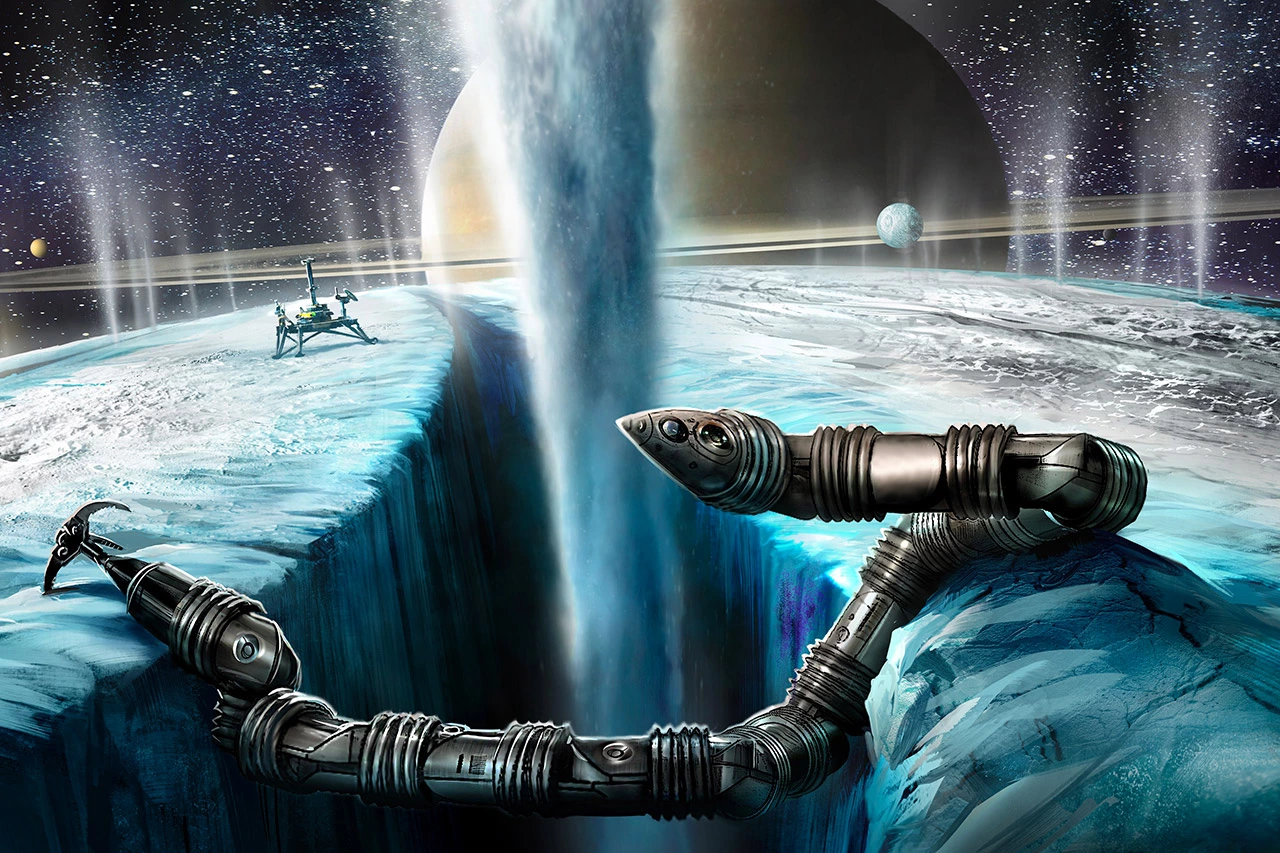The National Aeronautics and Space Administration (NASA) is developing a snake-like robot that it says can increase space exploration through its diverse adaptability to various terrains.
Exobiology Extant Life Surveyor (EELS), A system that is capable of exploring internal and enclosed dynamic terrain structures to assess evidence for life.
Its special focus is on Enceladus, the sixth-largest moon of Saturn. Discovered in 1789, it is a small and icy body. The Cassini spacecraft dubbed this icy moon to be one of the solar system’s ‘most scientifically interesting destinations’.
Besides this, the spacecraft found that geyser-like jets spew water vapor and ice particles from an underground ocean beneath its icy crust. Enceladus has become a promising lead for NASA in its search for life due to its global ocean and internal heat.
Enceladus is highly reflecting and has a surface temperature of about -201 degrees Celsius. But according to scientists, it is not as cold and inactive a place as appeared.
Besides Enceladus, the EELS system can explore Martial polar caps and descending cracks in the Earth’s ice sheets. Work is underway to identify high-priority and high-impact scientific probes to show the abilities of the snake-like robot.
Talking about this robot has an actuation and propulsion mechanism. It is driven by power and communication electronics. EELS uses a rotating propulsion unit that acts as tracks while the gripping mechanism and propeller unit helps it to access a plume vent exit. Due to this, EELS can help in exploring those areas which were once unreachable.




